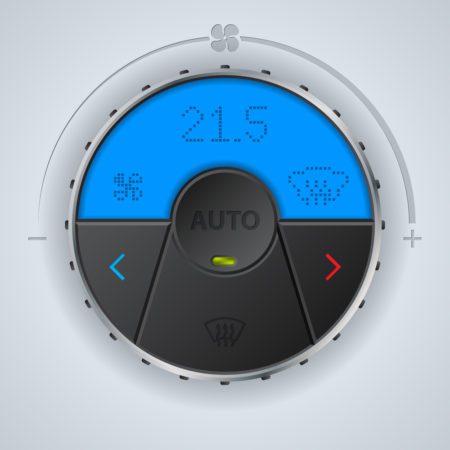Food in the Supply Chain Demands Precision
When it comes to shipping food, the margin for error is razor-thin. Food moves through multiple temperature-sensitive stages across the supply chain, requiring constant control and oversight. A brief lapse in transportation conditions or a minor packaging failure can compromise product quality, introduce contamination, or lead to costly food spoilage.
Today’s customers expect speed and safety—from farm to shelf to doorstep. With the rise of fresh food delivery and widespread access to frozen food, the pressure is on to get it right every time. These demands call for more than just trucks and trailers—they require strong cold chain logistics, real-time monitoring, and a deep understanding of the risks involved with moving temperature-sensitive products.
Cold Chain is the Backbone of the Food Movement
Behind every successful food shipment is a carefully managed cold chain—a system built to protect perishable goods from the moment they leave the source to the second they reach their destination. Whether it’s meat, poultry, seafood, eggs, or fresh produce, maintaining the right temperature is essential at every stop along the way.
Certain foods, like raw meat, raw chicken, and fish, are especially vulnerable to temperature changes. Even small fluctuations can lead to spoilage, bacterial growth, or a complete loss of product quality. That’s why cold chain logistics plays a vital role in protecting both food safety and shelf life.
This system isn’t just about having a refrigerated trailer. It involves temperature-sensitive products being managed through different stages of transport, storage, and handling—supported by solutions like thermal packaging, real-time temperature monitoring, and 24/7 refrigeration. These elements work together to prevent risk, reduce waste, and keep perishable products safe and viable for consumption.

The Role of Technology in Cold Chain Management
Imagine this: a load of fresh produce is en route to a major distribution center. Midway through the trip, the trailer’s refrigeration unit fails—but no one knows until it’s too late. By the time it arrives, temperatures have climbed just high enough to allow bacteria to grow, compromising the entire shipment. It’s a costly mistake—and one that could have been avoided.
That’s where technology steps in.
Modern cold chain management uses real-time visibility tools like IoT sensors, automated alerts, and fleet tracking to keep temperature-critical cargo in check. With real-time temperature monitoring, teams are alerted the moment a deviation occurs, giving them time to act before a small issue becomes a major loss.
These technologies also support better decisions—whether it’s rerouting a load due to delays, managing power fluctuations, or identifying recurring weak spots in the transport process. When your supply chain is armed with the right data, you’re not just reducing risk—you’re strengthening performance across the board.
Packaging, Equipment, and Infrastructure Matter
Maintaining the right temperature throughout the cold chain depends on more than just keeping things cold; it requires systems designed to protect products at every stage of movement and storage.
Thermal packaging plays a critical role in shielding temperature-sensitive goods during transit, especially during handoffs or short-term exposure to outside conditions. Without proper insulation, even a well-refrigerated trailer can fall short.
Equally important is the equipment behind the scenes. From reefer units on trucks to refrigerated warehouses, these systems provide the backbone of the cold chain. But if raw products—like meat, poultry, or fish—aren’t sealed correctly, juices can leak and create dangerous conditions. This kind of mishandling can lead to cross-contamination, especially in shared freight environments.
Strong packaging standards, reliable infrastructure, and well-maintained equipment help prevent contamination, protect product quality, and ensure compliance with regulatory standards. They’re not just operational essentials—they’re the foundation of trusted cold chain solutions and dependable services.

Cold Chain Expertise Makes the Difference
When it comes to moving high-risk, temperature-sensitive food, not all supply chain providers are up to the task. Cold chain expertise isn’t just a bonus—it’s a requirement.
Specialists in this space understand that different products have different needs. Fruit and vegetables bruise and spoil easily. Raw proteins like meat and seafood require consistently low temperatures to prevent bacterial growth. Frozen food must remain solid from warehouse to delivery. Managing these variables takes more than generic solutions—it takes experience.
The right provider offers customized cold chain solutions that include strategic route planning, temperature monitoring, and backup plans for unexpected delays. It’s not just about equipment—it’s about consistency, planning, and execution.
With real cold chain expertise, shippers can reduce spoilage, improve product quality, and build more dependable services for their customers. In an industry where trust is earned through performance, having the right partner makes all the difference.
Small Changes That Protect the Entire Chain
In food logistics, it’s often the smallest tweaks that deliver the biggest impact. Upgrading to high-quality thermal packaging or installing real-time visibility systems in older reefer units might seem like minor operational moves—but these changes can significantly reduce risk, protect product quality, and improve overall transportation outcomes.
These improvements aren’t just about avoiding loss—they’re about making better decisions. When logistics teams are equipped with clear, timely data, they can respond faster, plan smarter, and fine-tune performance across the entire supply chain.
Companies that take a proactive approach—whether by investing in smarter tools, more consistent processes, or tailored cold chain solutions—tend to deliver more reliable services and strengthen their reputation with customers. In a space as sensitive as food logistics, small upgrades aren’t optional—they’re strategic advantages.

Food Supply Chains Can’t Afford to Miss the Details
Food is fragile. Every stage of the supply chain—from farm to final delivery—requires careful planning, constant monitoring, and a deep understanding of the cold chain. There’s little room for error when you’re dealing with temperature-sensitive products that can spoil or degrade quickly.
But with the right combination of technology, reliable infrastructure, and proven cold chain expertise, companies can reduce risk, preserve quality, and deliver food that meets customer expectations every time.
Whether it’s an upgrade in thermal packaging, improved routing, or smarter data use during transport, small operational changes add up to big wins. In the world of food logistics, these aren’t just tweaks—they’re essential solutions that keep your business moving and your customers satisfied.
Because when it comes to food, small changes aren’t small at all—they’re the key to the entire operation.
